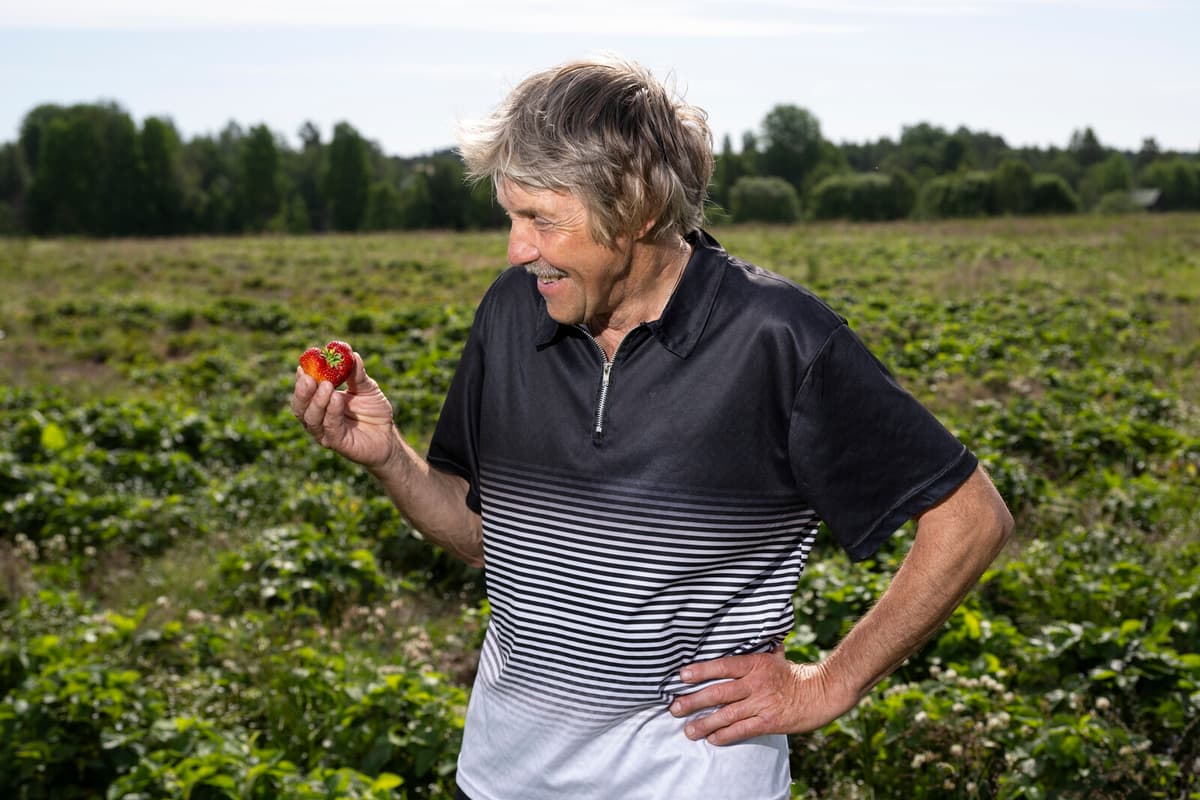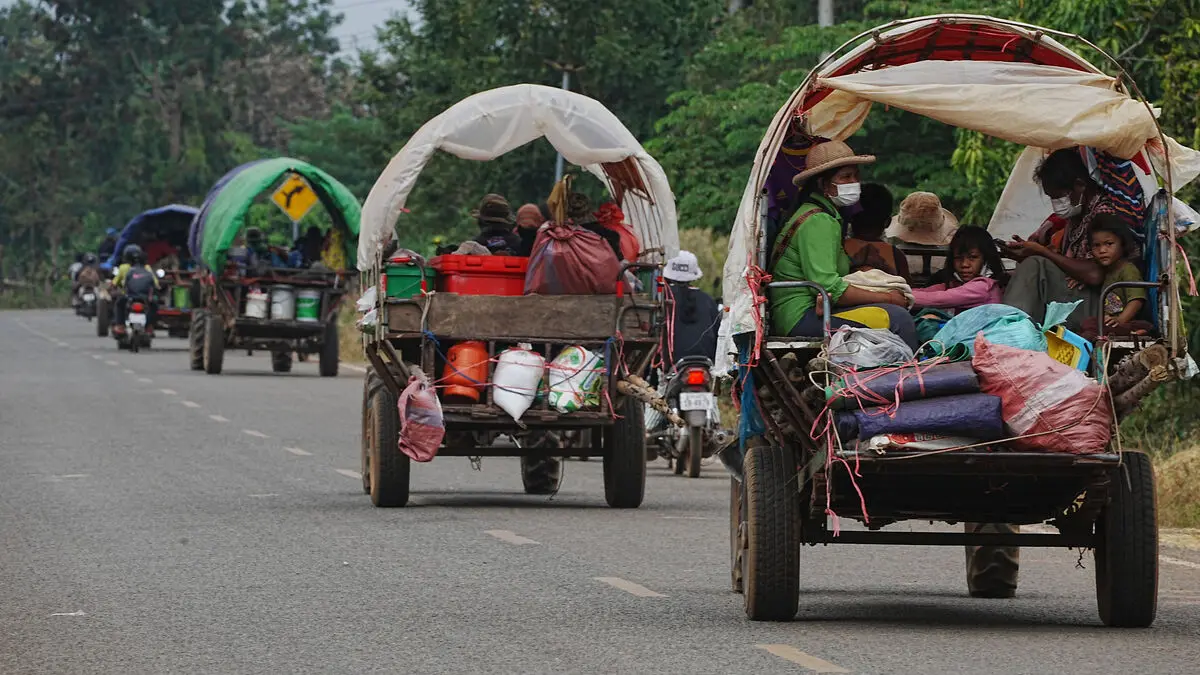Ingemar Hammarlund in Ockelbo had at the beginning of the summer a list of about twenty people who wanted to have a whole box of strawberries, or more. But they had to wait.
One wants them to develop at their own pace.
Around Midsummer, much is about strawberries, even if the season is longer than that. This year, Ingemar Hammarlund could not offer any strawberries from his cultivation to Midsummer, the spring was too cold. Not until a bit into July did he expect to be able to pick.
One wants to be able to deliver, and preferably to Midsummer. Normally, there are at least until mid-July, but this year it became later.
He has been growing strawberries since the 1980s.
I knew nothing when I started! But I like strawberries and like to work with them.
A summer activity
Strawberry cultivation is not something you get rich on, even when prices soar before Midsummer. Ingemar Hammarlund worked for a long time in the school with the cultivation as a "summer activity" and many of the area's young people have had summer jobs picking. If his perhaps most famous student from his time as a sports teacher was among the pickers, he does not remember, but Prince Daniel has at least come and shopped from him with his family.
When Swedes started eating strawberries in the 1700s, it was just the upper social classes who feasted on the sweet berries. It did not become really big until the 20th century's market gardens and allotments. The fact that more and more people had the opportunity to have a summer cottage gave the strawberry an additional boost, says food researcher Richard Tellström.
It was not something the working class had before the 1920s-30s. The upper class had summer homes. It's a kind of summer home food culture, or summer cottage food culture, that drives the interest in strawberries.
In the 1950s, large strawberry cultivations were opened, mainly in central Sweden and southern Sweden. This coincides with car traffic, you go on excursions and buy strawberries. In the second half of the 1960s, self-picking came and made the interest in strawberries increase even more.
Wrong season
So the strawberries went from being a pleasure for the elite to a popular luxury. And they are still seen as luxurious, even when it is possible to find imported strawberries when it is still winter here.
Serving a food at the wrong season has always been considered extra luxurious and flashy because it belongs to the upper class. So it's finer to serve strawberries on New Year's Eve than on Midsummer Eve, it's like the wrong season and then it's only the most wealthy who can afford it.
Strawberry grower Ingemar Hammarlund is not overly fond of the imported berries that appear before the frost has gone from the ground.
There should be everything, always. I don't buy any myself, at least, he says diplomatically.
Growing strawberries, and especially organically, is about adapting to the fact that nature does not always cooperate. One challenge is that without spraying, everything wants to grow, not just strawberries, dandelions and white clover readily spread out in the fields.
The worst weed is thistle, especially if they get in among the strawberries. One wants the strawberries to develop at their own pace and not be competed out by other plants.
The weeds are the biggest problem, but the pests are also a tough challenger. Ingemar Hammarlund has had visits from both strawberry weevils and hoverflies. The seagulls are heard screaming next to the strawberry land. It's hard to protect yourself from birds.
They can't be scared away, because they're not afraid. When the seagulls come in flocks, they can take everything if you're not at home.
Rain worst
And then the weather, which can be both the farmer's best friend and worst enemy. A dry summer he can handle, because he has good opportunities for irrigation – a necessity for strawberries. A wet and rainy summer is worse.
It must not be too wet when you pick, it's hard to pick when it's raining. And if it rains for several days, it's a crisis, then the strawberries start to rot.
A few years ago, it thawed and froze alternately so that the strawberry fields lay under ice.
I saw the poor guys down there under the ice trying to breathe.
He cannot say that he has noticed any climate change, but the weather and the seasons have their fluctuations and one has to accept that.
Then you can't give up, you just have to take new action. You work with or against nature.
Boel Holm/TT
Facts: Strawberries - a vitamin injection
TT
Strawberries contain a lot of vitamins, dietary fiber, and minerals. Among other things, they have more vitamin C and twice as much folate as oranges per kilo.
Sweden imports around 7,500 tons of strawberries and raspberries from abroad annually. About 20,000 tons of strawberries are estimated to need to be picked in Sweden during a season.
Swedes consume an average of about 2 kilograms of strawberries per person each year.
Source: National Food Agency and the Board of Agriculture





